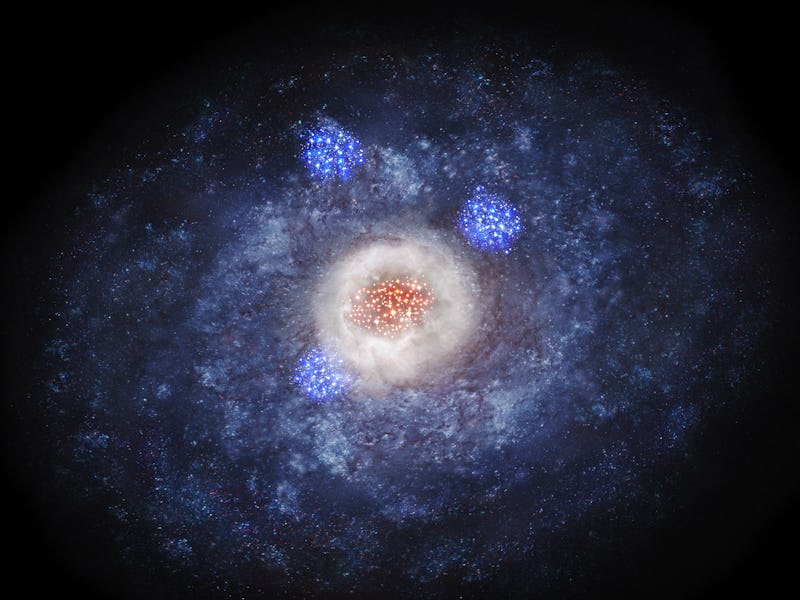[[Astronomy, in many ways, is not so different from archeology. Scientists in both fields are using tools to excavate the past and gain a better understanding of just how everything got to be here. It’s why astronomers are obsessed with learning more about how the universe began, how it progressed, and how worlds like ours came to be. But the evolution of galaxies remains, as it always has, a murky phenomenon.
A new study published in The Astrophysical Journal Letters aims to clear up some of that muck, with new observations that show how star formation foments the growth and expansion of galaxies, allowing them to change shape seemingly on their own, without interaction with other galaxies.
“Massive elliptical galaxies are believed to be formed from collisions of disk galaxies,” said Ken-ichi Tadaki, a researcher at the National Astronomical Observatory of Japan (NAOJ) and the lead author of two research papers which detail the new observations, in a news release. “But, it is uncertain whether all the elliptical galaxies have experienced galaxy collision. There may be an alternative path.”
Observation images of a galaxy 11 billion light-years away.
The NAOJ team started their observations with an eye to explore distant galaxies 11 billion light-years away, which essentially means observing them is to look back into time 11 billion years — just 3 billion years after the Big Bang. Getting an early glimpse of such galaxies is an easy way to observe what such bodies looked like in the incredibly ancient past, and understand what factors went into their evolution and early growth.
The NAOJ’s 8.2-meter Subaru Telescope in Hawaii found 25 galaxies within this 11-billion-year epoch, and then followed up with deeper observations through NASA’s Hubble Space Telescope and the internationally managed Atacama Large Millimeter/submillimeter Array (ALMA) located in Chile. The two instruments joint provided an understanding of the shape of the galaxies along with information where stars births were most active.
The data obtained illustrates that the explosive star formation in these galaxies creates a swell of stellar births at the center of galaxies, and this stellar bulge encourages elliptical or lenticular galactic shapes.
“Here, we obtained firm evidence that dense galactic cores can be formed without galaxy collisions,” said Tadaki. “They can also be formed by intense star formation in the heart of the galaxy.”
Evolution diagram of a galaxy. First the galaxy is dominated by the disk component (left) but active star formation occurs in the huge dust and gas cloud at the center of the galaxy (center). Then the galaxy is dominated by the stellar bulge and becomes an elliptical or lenticular galaxy.
The research is an interesting look at galaxy formation in depth, but viewed under a larger scope of space science, the new observations demonstrate the factors that go into the evolution of stars and planetary systems, which could shed light on what kinds of environments are best primed for fostering habitable systems like the solar system. Of course, that process inevitably raises more questions than it answers — the more scientists learn about the universe, the more we seem to learn about how much we don’t know.
